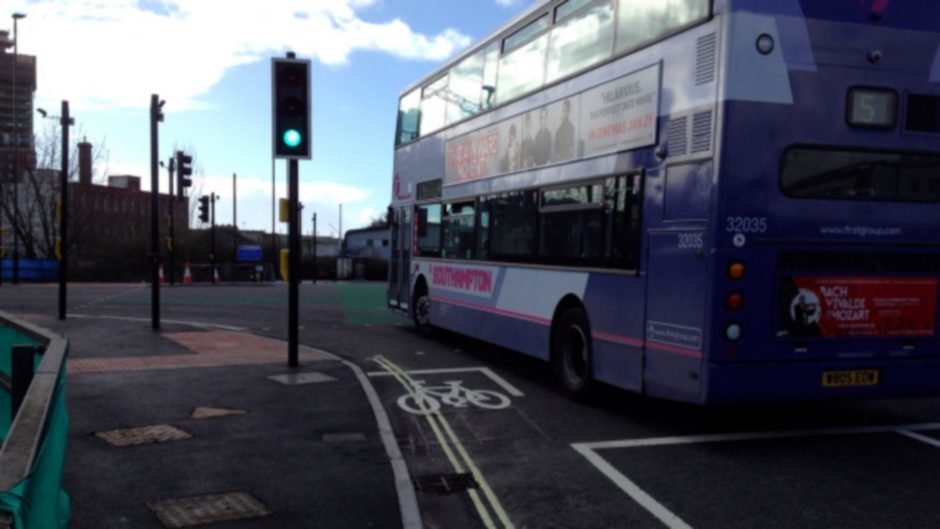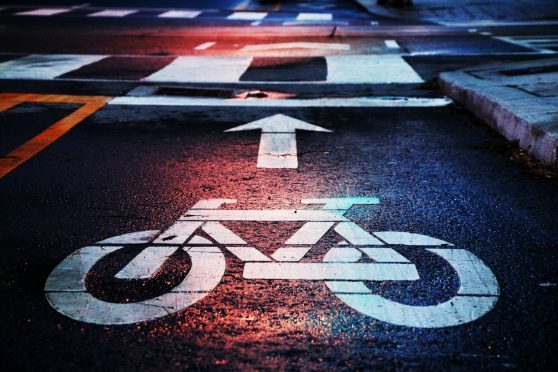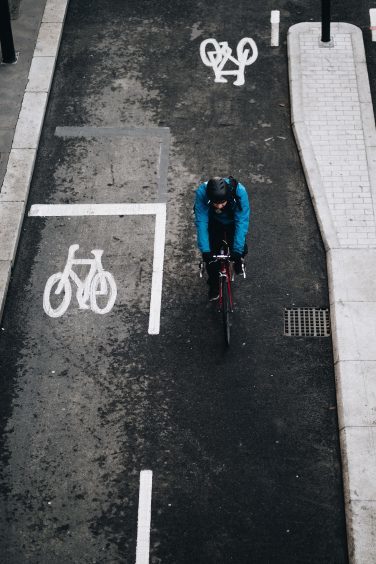The World Health Organisation (WHO) recently published an air quality report, listing Glasgow as one of the 51 cities that it tested as exceeding “safe” threshold limits for pollution particles in the air.
During a recent ride from London to Glasgow over several days I was in a position to ride through a lot of urban areas. As I did so I was very aware of the amount of congestion s and how many engines were idling as vehicles sat stationary in jams.
I was also very aware of how quickly I, on a bike, managed to move through these areas, but how few cyclists were following suit. One barrier to the lack of cycling commuters was the quality of a dedicated cycling infrastructure (or lack of) that existed across the UK and how this often differed in quality and quantity as I passed through different local authority regions.
A lot of places had it badly wrong and it was clear that any bike-friendly infrastructure in place was, at best a token gesture, that had no real benefit to riders and at worst actually put riders in more danger than if they avoided the cycle lane completely. In some areas the cycle lanes were segregated from the roads, a tactic that throws up a whole plethora of pros and cons; and can you really call a painted white line on a pedestrian’s pavement a cycle path?
In other places they had almost got it right and my journey through some deeply congested city centres was fine. Unfortunately these examples were few and far between and still short-lived with basic design flaws.
One major cause of collisions and accidents between cyclists and motor vehicles is undertaking. So much so that many larger commercial vehicles now carry warning stickers on the rear-left of their vehicle warning cyclists either to take care or not to pass on the left.
Despite this, cyclists – when moving faster than the flow of traffic – tend to do exactly this. In general they may feel safer passing traffic in this way and indeed the design of cycle lanes actually encourages such manoeuvres.
Think about how many approaches to junctions have a short section of cycle path on the left, leading up to a bigger advanced stop box at the front of the junction. It is at this key-point, when traffic is turning left and cyclists travelling straight ahead are being filtered in on the inside, that many incidents occur.
On my travels I only saw two occasions when cyclists were filtered to the front via a cycle lane on the right-hand side of the left lane. If you think about it, this is a much safer approach as drivers in motor vehicles are more accustomed to vehicles passing them on the right, so will have an increased awareness of this manoeuvre.
The highway code itself is not clear on the issue. Rule 160 states that road users should “be aware of other road users, especially cycles and motorcycles who may be filtering through the traffic” and Rule 211 states that drivers should “look out for cyclists or motorcyclists on the inside of the traffic”. This vague guidance can be interpreted in many ways and hints that cyclists should be undertaking stationary, or slow moving traffic, rather than making safer overtaking manoeuvres.
Cycling through cities and urban areas is fun and a great way to get about quickly, but it is clear that to be done safely it takes foresight and awareness from both the cyclist moving through the traffic and other road users noticing what is going on around them. If we are to see more use of cycles as a form of transport in our cities, and the WHO report about Glasgow points in the direction that road planners need to be bolder and more considerate in their design and implementation of cycle paths. The current haphazard nature of our approach to an “integrated” transport system shows little consideration for actual continuity, functionality and, above all, safety.
Join the Blazing Saddles Strava Club at: www.strava.com/clubs/BlazingSaddlesWeekendCourier
Follow Scot on the Children in Need Rickshaw Challenge 2017 Visit : Pudsey.viewranger.com/ to follow a live GPS track of where the Rickshaw is.
Take part in the“Virtual Rickshaw Challenge” Set your target, clock up your miles and raise money by visiting rickshaw.bbcchildreninneed.co.uk/











